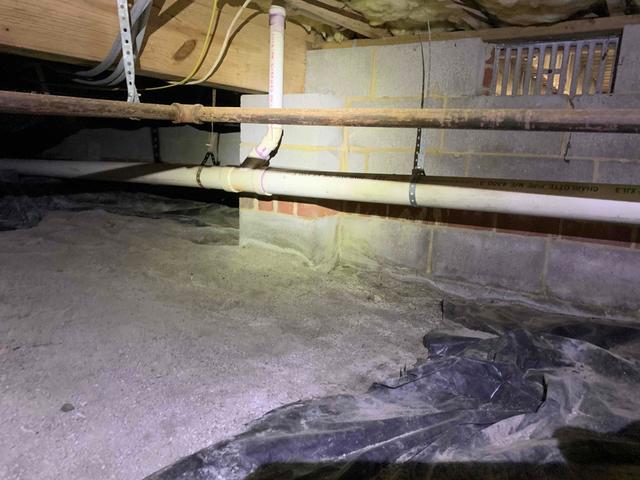
Gaps in the Vapor Barrier
There are tears and gaps in this vapor barrier that is allowing the earth's moisture to rise into the crawl space and raise the relative humidity. This raised relative humidity had led to mold and mildew growth on many of the wooden floor joists. Musty odors and mold spores can make their way up into the home and irritate those with allergies or asthma.
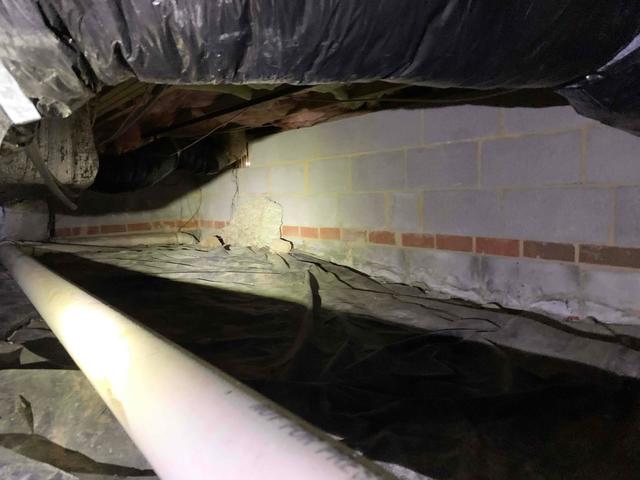
Porous Foundation Walls
The foundation walls of this crawl space were made with porous cinderblocks, which allow the outside water to seep through them. Efflorescence was visible on some of the walls, which occurs when moisture leaks through the walls and pushes the inner salts and sediments to the surface. This creates a chalky, powdery substance on the walls, and the moisture adds to the relative humidity of the crawl space.

Open Vents on the Foundation Walls
There are open vents lining these foundation walls, which allow the outside air and moisture to flow freely through them. Unfortunately, the moisture becomes trapped and adds to the relative humidity of the crawl space. During the winter, the cooler air becomes trapped in the crawl space and causes the homeowner's first-story floors to become cold and uncomfortable, leading to higher energy bills as their system is forced to heat up the infiltrating cold air.
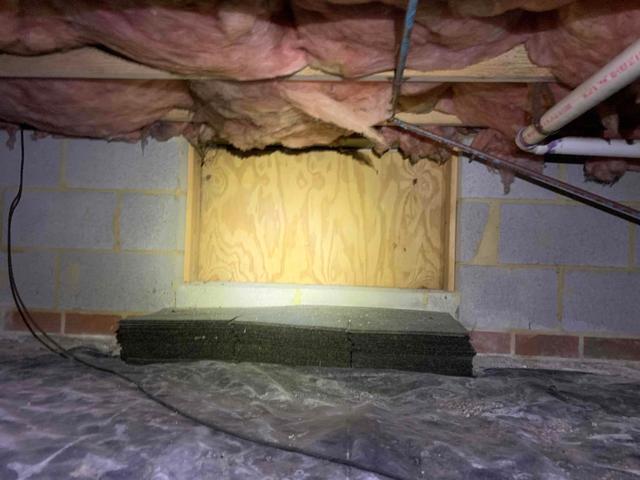
Crawl Space Entrance
A wooden panel was used as the door for this crawl space entrance. Unfortunately, the outside weather can cause metal and wooden doors to warp over time. This creates gaps in the entrance where the outside air and moisture can leak through and affect the relative humidity and environment. Small critters and creatures can also force their way in through these gaps, making the dark and damp crawl space their home.
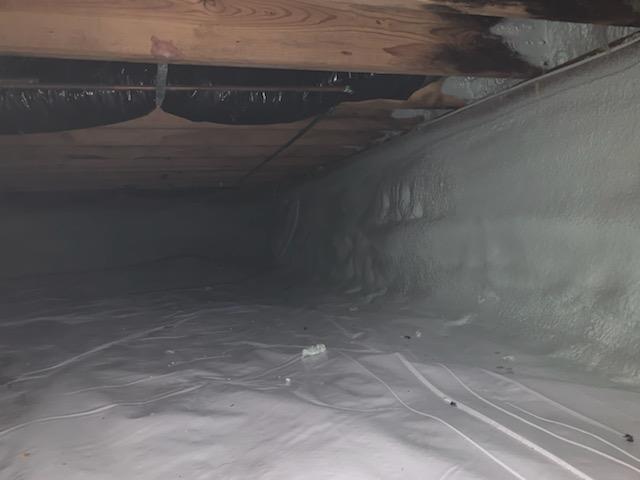
CleanSpace Light Vapor Barrier
A durable 10-mil vapor barrier, called CleanSpace Light, was installed over the dirt floor of this crawl space. It is wrapped around all piers, sealed up with vinyl tape, and mechanically fastened to the foundation walls six to eight inches above outside grade. This vapor barrier will help to protect the crawl space from any moisture rising from the earth.
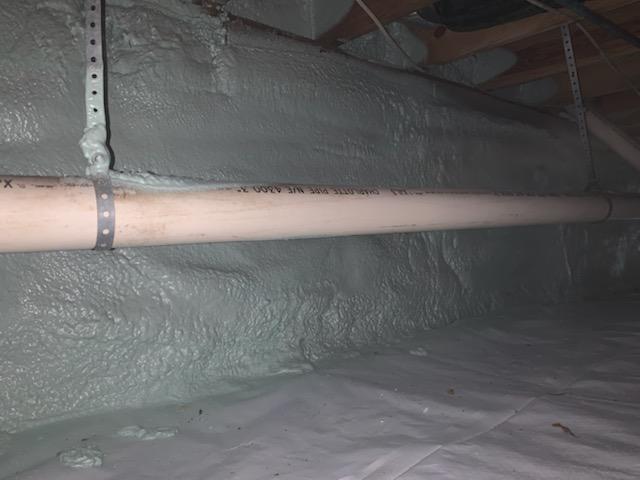
Closed-Cell Spray Foam
An application of closed-cell spray foam was applied over the foundation walls. With an R-10 value, this spray foam insulation acts as an air barrier and vapor retarder, protecting the relative humidity and environment of the crawl space. A two-inch viewing strip is left behind for termite inspectors.
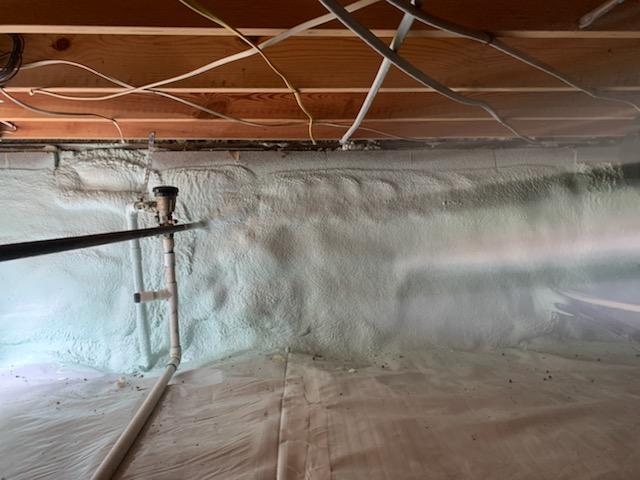
Covering The Open Vents
The open vents lining these foundation walls were internally covered using custom foam board pieces and sealed with can foam. Then the foundation walls are covered using closed-cell spray foam. The outside air and moisture can no longer infiltrate through the open vents and affect the crawl space environment.

Friction-Fit Door
A friction-fit door was installed at the entrance of the crawl space. This custom foam board door is custom-made to fit perfectly in this entrance. It does not deteriorate over time and will not warp due to weather. All seals and gaps are blocked, disallowing any infiltrating leaks from the outside air and moisture.

